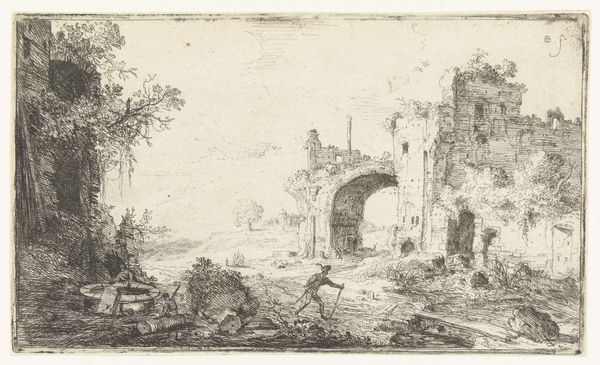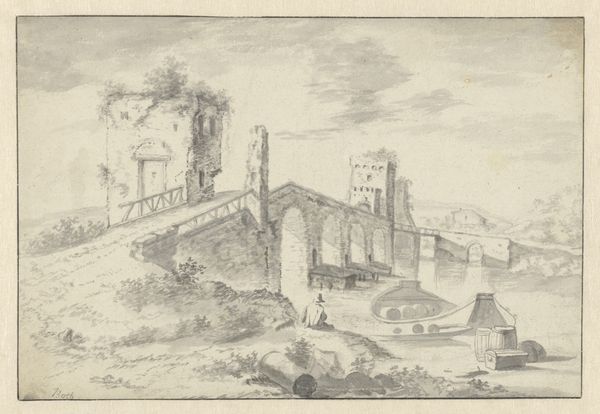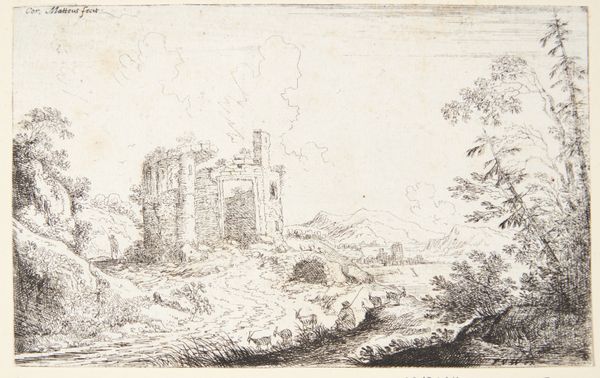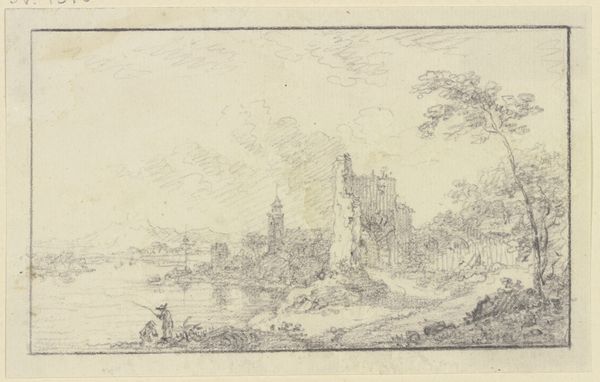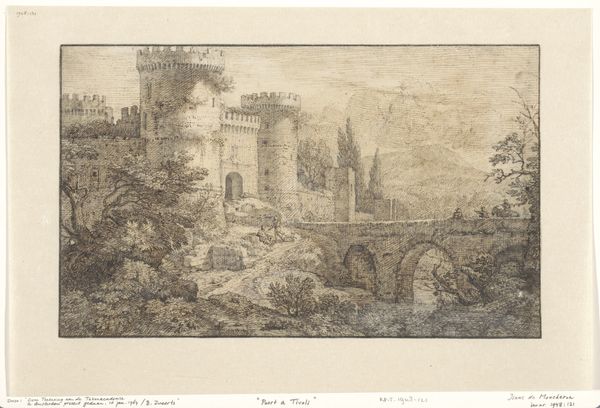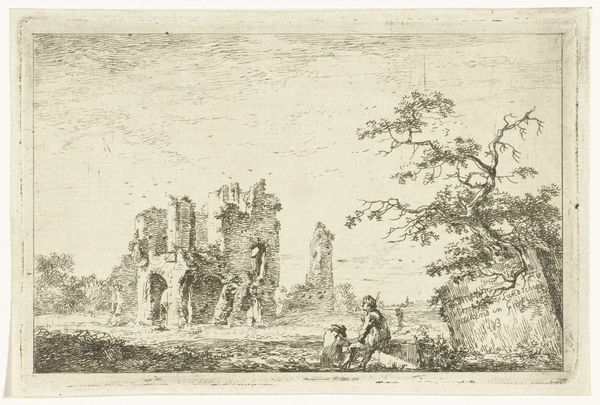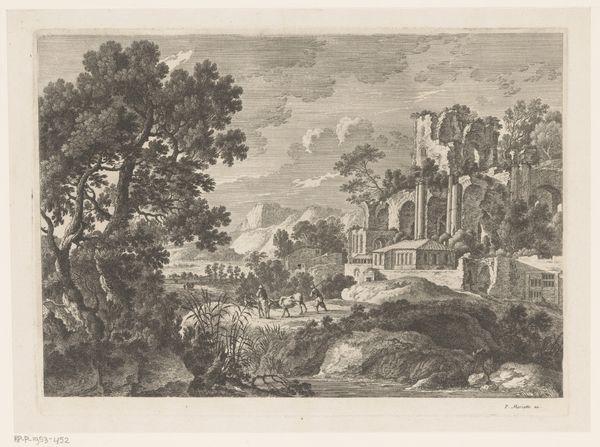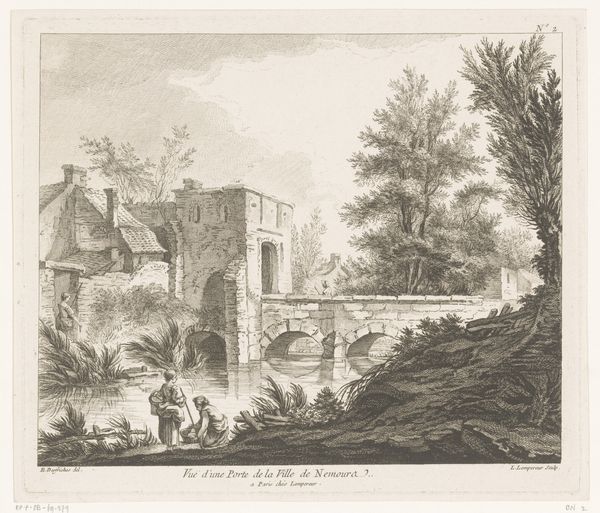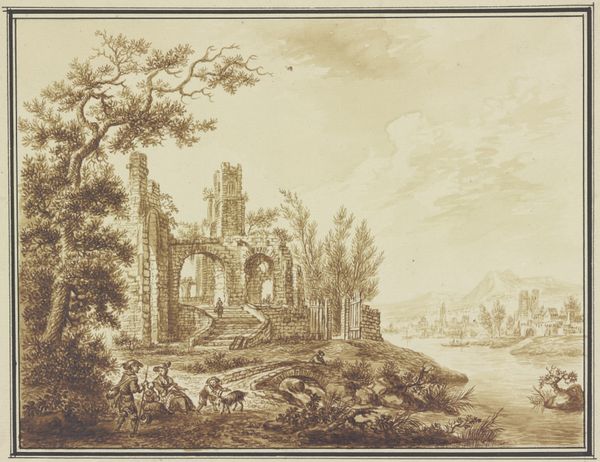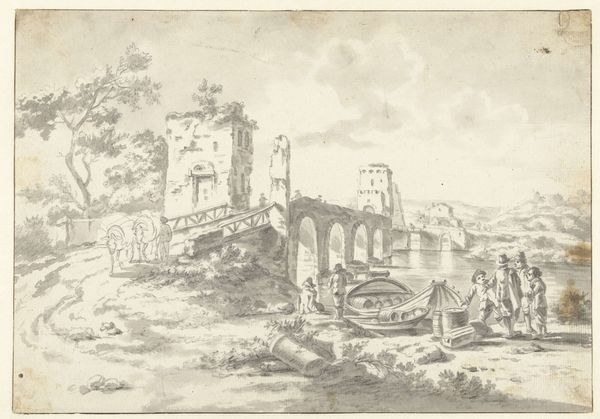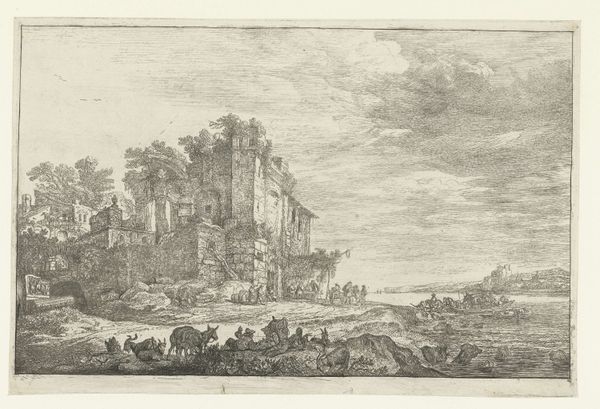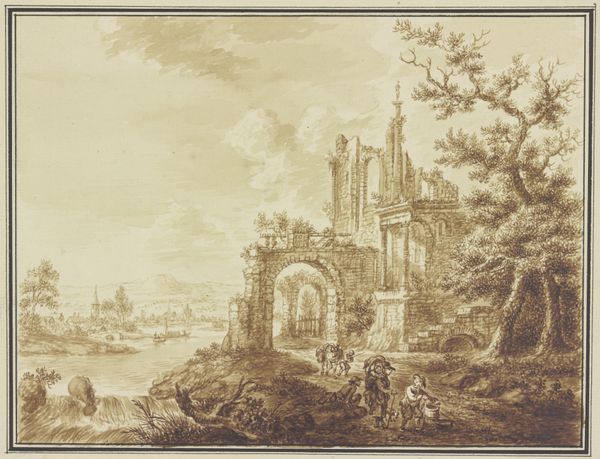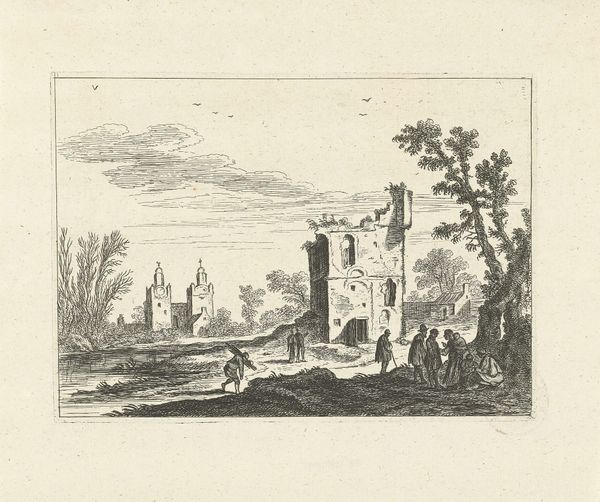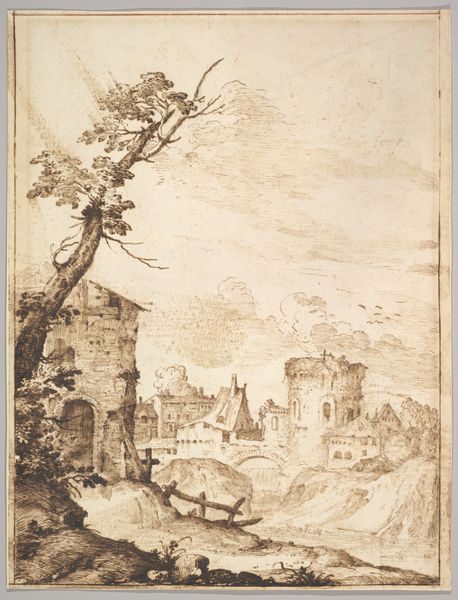
Von Türmen flankierte Brücke, im Vordergrund am Fluß ein Angler und ein Reiter
0:00
0:00
drawing, pencil, graphite
#
drawing
#
landscape
#
form
#
pencil
#
15_18th-century
#
line
#
graphite
#
history-painting
#
realism
Copyright: Public Domain
This work, by Franz Schütz, presents a scene articulated through fine lines that delineate forms and suggest depth. The composition is structured around a river and a medieval bridge flanked by towers, establishing a vertical anchor amidst the horizontal flow of the landscape. The linear quality of the etching invites a structural reading. Notice how Schütz employs hatching and cross-hatching to model form and texture. The use of line and form creates a semiotic system where architectural ruins signify the passage of time and the transient nature of human constructions. The bridge itself, a symbol of connection, is rendered as a ruin, destabilizing the idea of progress and permanence. Observe the contrast between the solid, geometric forms of the bridge and the more organic shapes of the trees and clouds. This interplay highlights a tension between the man-made and the natural. The artist uses these contrasting forms to reflect broader philosophical ideas about nature and culture. The formal qualities of the work are not merely aesthetic choices but are deeply intertwined with cultural and philosophical dialogues.
Comments
No comments
Be the first to comment and join the conversation on the ultimate creative platform.
